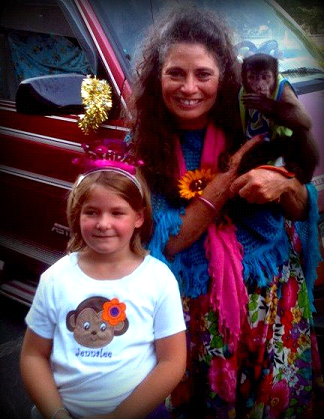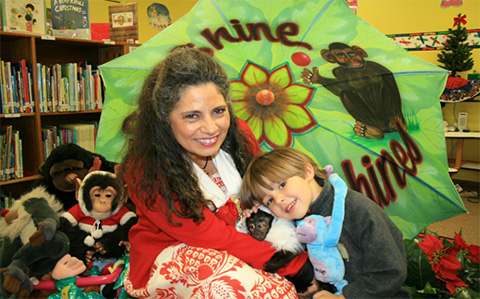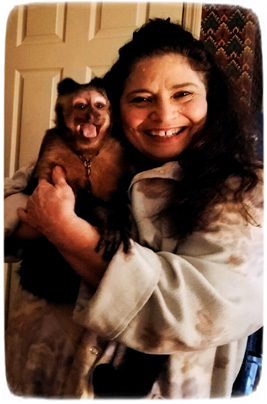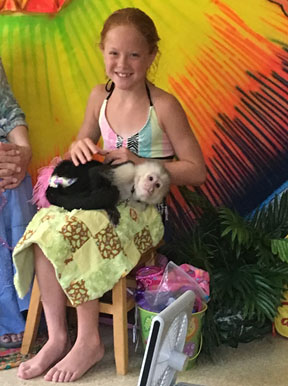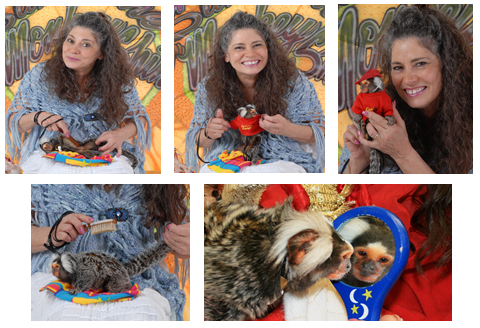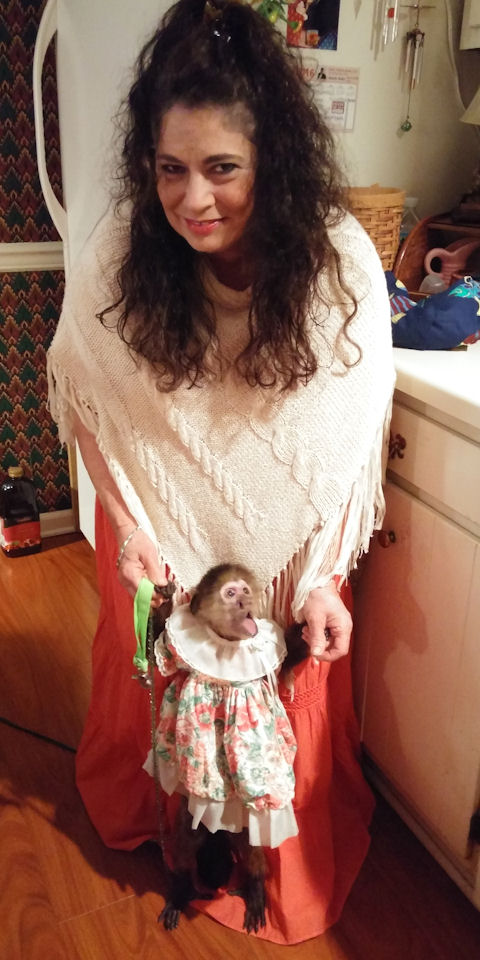By Mary Lynn Campbell
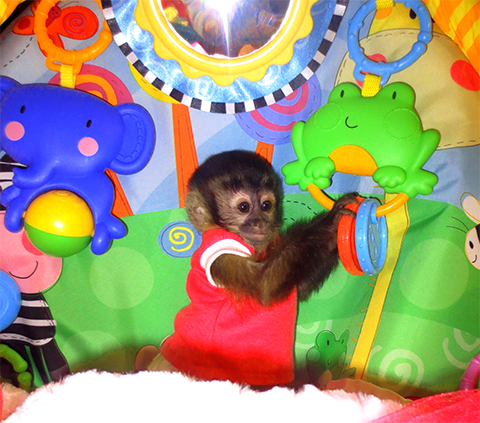
Olivia – 5 Weeks Old
Happy New Year From Primate Care. We are excited to start 2018 with a post about monkey toys. All monkeys love toys from the very beginning of their lives. In my book “Living With Monkeys”, which is for sale on our sister site primatestore.com, I wrote about helping baby monkeys to not bite by offering things for them to chew on instead of your fingers, hands and hair. Yes, even your hair can become one of their favorite play things. Monkeys love to chew on everything.
When Bob and I were raising Silly Willy and he started to put his mouth on us, I knew it was time to offer him something to put his mouth on instead of us. Baby monkeys are not able to hold extremely large toys, so I went through the house and gathered things that I felt would fit into his small hands and then put small dishes full of these things into the rooms of the house that he was taken into.
The things that I chose to put into the dishes were things like: plastic Bic pen tops, medium size springs, medium size washers, large paper clips, medium key rings, plastic rings that are used to hang toys on baby cribs, plastic coke bottle caps, milk bottle caps, and any other small safe things that I could find. Of course, I washed these toys frequently to ensure that they were safe for my little guy.
I have also learned from many other monkey caregivers that some babies come with even more of a “mouthy problem” than Silly Willy came with and that their monkeys chose to put their mouth on everyone’s hands every time their baby monkey was being handle
. I know this must be a challenging behavior as a caregiver is trying to train their baby monkey to not do this. Due to this being such a problem, the little ones will become very hard to deal with when languaging with them using the word ‘NO’ so often.
(more…)
